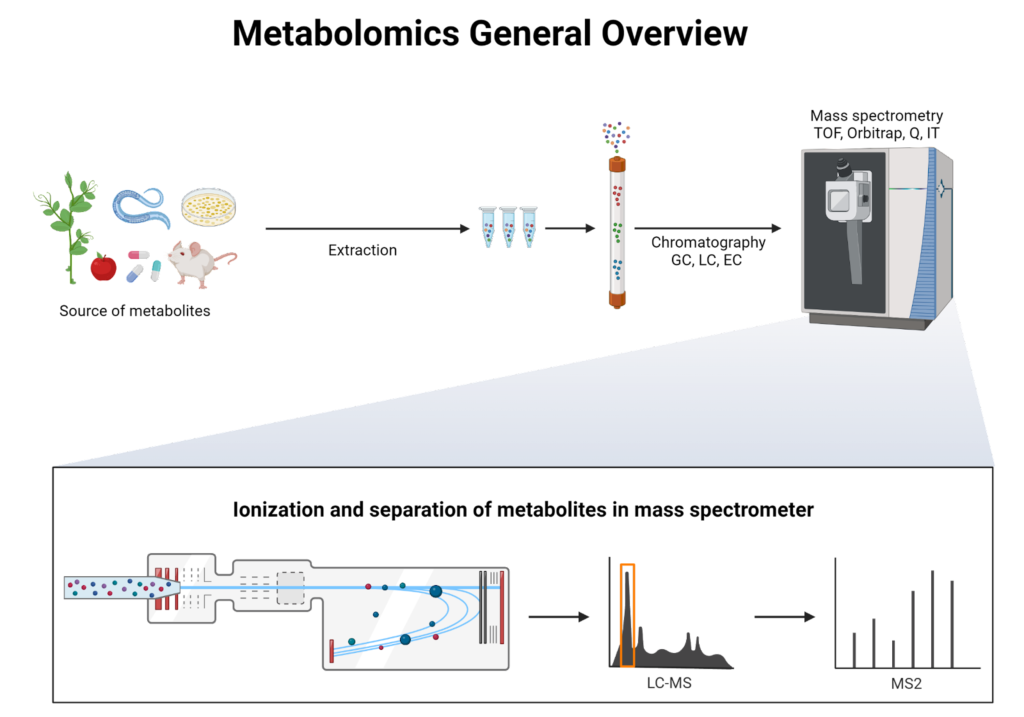(noun. /me-ta-buh-LO-miks/)
by Yasemin Cole
What does it mean?
The study of all the global small molecules (also called metabolites) within a living organism, biosample/specimen, tissue, or cells. “Small” molecules typically have a mass between 50 – 1500 grams per mole (grams per mole is also called “daltons”, abbreviated Da).
How do I use it in a sentence?
“Rather than analyzing a handful of known chemicals at a time, the researcher decided to use metabolomics to analyze hundreds to thousands of metabolites.”

Etymology
English: The term was coined in the late 1990s by combining the words metabolome + -ics.Similar to the creation of the word “genomics,” indicating the study of the complete genome, metabolomics would encompass the global picture of metabolites.
Examples of “omics” fields:
Genomics = study of whole set of genes
Metabolomics = study of whole set of metabolites (small molecules)
Proteomics = study of whole set of proteins
Fields of study in which this word is commonly used
Genomics
Precision medicine
Omic technologies
